-

May
18
Interpretive Summary: Factors associated with the time and magnitude of the nadir body condition score in early lactation and its subsequent effects on fertility of Holstein cows
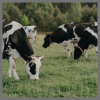
The transition from gestation to lactation requires adjustments in nutrient consumption that are challenging for the postpartum dairy cow. As milk energy output increases more rapidly than energy intake, most cows mobilize fat and labile protein from body energy reserves, which results in reductions in body condition score during early lactation.
Read more
-

May
18
Interpretive Summary: Effects of maternal methionine supplementation on the response of Japanese quail (Coturnix coturnix japonica) chicks to heat stress
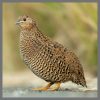
The deficiency of nutrients such as methionine in the diet of birds is affecting fertility rate, egg production, egg weight, and progeny weight. In addition, the maternal environment influences gene expression through epigenetic mechanisms, where the conditions experienced by the parental generation during embryonic development can produce effects on the progeny. This study investigates how methionine supplementation in the diet of quail hens can reduce the effects of oxidative stress and improve the performance of progeny subjected to heat stress during growth.
Read more
-

May
18
Interpretive Summary: Genetic and phenotypic relationships between ewe reproductive performance and wool and growth traits in Uruguayan Ultrafine Merino sheep

Fiber diameter (FD), clean fleece weight (CFW), live weight (LW), and reproductive performance are important traits in Merino flocks. This study estimated the genetic parameters for a range of production traits and ewe reproductive performance.
Read more
-

May
18
Interpretive Summary: Effects of dairy cow temperament on milk yield: a systematic review and meta-analysis

Individual differences in the behavior of dairy cows can affect their productive performance. In an attempt to summarize the scientific information available, we conducted a systematic review and meta-analysis to identify the effects of dairy cows’ temperament on milk yield.
Read more
-

May
18
Interpretive Summary: Applying the indicator amino acid oxidation technique in the domestic cat: results of a pilot study and development of a non-steady state prediction model

It is necessary to apply more sensitive techniques to improve our limited understanding of amino acid (AA) requirements of adult cats. The non-invasive indicator amino acid oxidation (IAAO) technique is highly sensitive in mature animals. However, while it has been widely applied in different species, this technique has yet to be used in cats.
Read more
-

May
18
Interpretive Summary: Effects of weight loss and feeding specially formulated diets on the body composition, blood metabolite profiles, voluntary physical activity, and fecal metabolites and microbiota of obese dogs

In this study, we aimed to determine the effects of restricted feeding of specially formulated foods on weight loss, body composition, voluntary physical activity, serum hormones and oxidative stress markers, and fecal metabolites and microbiota populations of obese dogs. A control (OR) food was fed during a 4-wk baseline to identify intake needed to maintain the body weight (BW).
Read more
-

May
18
Interpretive Summary: Short communication: diversity of endogenous avian leukosis virus subgroup E elements in 11 chicken breeds
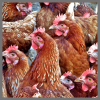
Avian leukemia virus subgroup E (ALVE) is an endogenous retrovirus, which is extensively integrated with the chicken genome, and has some effects on chicken production traits and appearance. Most of the current studies on ALVE insertion sites were conducted in standard breeds.
Read more
-

May
11
Interpretive Summary: Effects of lasalocid, narasin, or virginiamycin supplementation on rumen parameters and performance of beef cattle fed forage-based diet
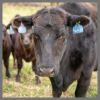
Feed additives are nutritional tools that benefit dietary digestibility and nutrient utilization, alter ruminal fermentation routes, and improve cattle growth and efficiency, thus increasing productivity and profitability in beef cattle systems. Nonetheless, most of the current research focuses on supplementing feed additives in high-concentrate diets.
Read more
-

May
11
Interpretive Summary: Level of feeding and stage of maturity affects diet digestibility and protein and fat deposition in cross-bred lambs

Understanding animal responses to changes in nutrition will assist to create more efficient red meat production systems. Complex interactions exist due to the quality, physical characteristics and level of feeding of the diet, and the nutritional history of the animal. The resultant changes to body composition and the partitioning of energy to tissues has important implications for producers.
Read more
-

May
11
Interpretive Summary: Effects of adding ruminal propionate on dry matter intake and glucose metabolism in steers fed a finishing ration
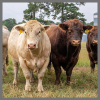
Propionate metabolism by the liver is thought to be a key regulator of appetite and feed intake of animals, including cattle. Previous research has shown that providing propionate to the rumen of cattle decreases feed intake.
Read more
-

May
11
Interpretive Summary: Influence of fiber-rich coproducts on nutrient and energy digestibility and utilization in sows
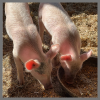
Coproducts from the food and agricultural industries have the potential to partly substitute grain in diets for empty nonlactating sows. Many coproducts are high in fiber and with diverse fiber composition. Some being easily fermented, while others are more resistant to fermentation giving rise to a large variation in the total tract digestibility and utilization of nutrients and energy.
Read more
-

May
11
Interpretive Summary: Effects of dietary crude protein level and sodium butyrate protected by medium-chain fatty acid salts on performance and gut health in weaned piglets
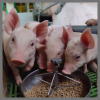
Reducing dietary levels of crude protein (CP) and the use of feed-additives such as sodium butyrate protected by medium-chain fatty acid salts are currently under investigation as nutritional strategies with beneficial effects on the intestinal barrier, and consequently on the health of weaned piglets.
Read more
-

May
11
Interpretive Summary: One-carbon metabolism and related pathways in ruminal and small intestinal epithelium of lactating dairy cows
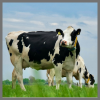
The gastrointestinal tract serves a number of essential functions in the animal and exposure to physiological and environmental stressors can lead to disruption of its barrier function and compromise nutrient absorption. In nonruminants, mechanisms to cope with pro-oxidant and pro-inflammatory stressors are essential for maintaining gut function.
Read more
-

May
11
Interpretive Summary: Multiphasic mixed growth models for turkeys
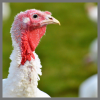
Turkeys have been bred for several purposes over the past decades. We studied growth patterns of turkeys of two genetic lines bred for either meat production or egg production.
Read more
-

May
04
Interpretive Summary: NCCC308: Nutrition and Management of Feedlot Cattle to Optimize Performance, Carcass Value, and Environmental Compatibility – Feature Collection - Nutrition and Management of Finishing Cattle

The NCCC308 Multistate Research Coordinating and Information Exchange Group currently consists of members from 18 Agricultural Experiment Stations with a long and strong history in conducting applied finishing cattle nutrition and management research and Extension. The committee has met yearly since 1982, typically at a University or research center, in May.
Read more
-

May
04
Interpretive Summary: Lipid metabolism mRNA expression and cellularity of intramuscular adipocytes within the Longissimus muscle of Angus- and Wagyu-sired cattle fed for a similar days on feed or body weight endpoint
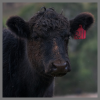
This study investigates intramuscular (IM) adipocyte development in the Longissimus muscle (LM) between Wagyu- and Angus-sired steers compared at a similar age and days on feed (D) or similar body weight (B) endpoint by measuring IM adipocyte cell area and lipid metabolism mRNA expression. Angus-sired steers (AN) were compared with steers from two different Wagyu sires (WA), selected for either growth (G) or marbling (M), to be compared at a similar days on feed (DOF; WA-GD, and WA-MD) in Exp. 1 or body weight (BW; WA-GB, and WA-MB) in Exp. 2.
Read more
-

May
04
Interpretive Summary: Effect of weaning strategy and backgrounding management on growth performance, carcass characteristics, and mRNA expression in the longissimus muscle of beef steers
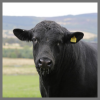
The intramuscular fat depot, also called marbling, is a vital component of beef quality. This study aimed to investigate the effect of the weaning strategy (early vs. normal) and the subsequent backgrounding management on marbling deposition of beef carcasses.
Read more
-

May
04
Interpretive Summary: Guanidinoacetic acid supplementation improves intestinal morphology, mucosal barrier function of broilers subjected to chronic heat stress

With the global warming getting worse, heat stress (HS) has been a serious problem faced by poultry industry. As one of the main target organs, the intestine is easily affected by HS.
Read more
-

May
04
Interpretive Summary: Galyean appreciation club review: a holistic perspective of the societal relevance of beef production and its impacts on climate change

This article aims to provide data-driven information about the relevance of the U.S. beef cattle herd to our society and its greenhouse gas (GHG) contribution to climate change. The Environmental Protection Agency reported that U.S. beef cattle emitted 22.6% of the total agricultural emissions, representing about 2.2% of the total anthropogenic emissions of carbon dioxide equivalent (CO2e).
Read more
-

May
04
Interpretive Summary: Enterococcus faecium from chicken feces improves chicken immune response and alleviates Salmonella infections: a pilot study
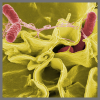
Infectious bacterial contamination in broiler production is a food safety concern and can be transmitted to humans via contaminated meat and derived products. Minimizing bacterial infections using beneficial bacteria called probiotics can reduce the emergence of antibiotic resistance in the livestock industry.
Read more
 MayInterpretive Summary: Factors associated with the time and magnitude of the nadir body condition score in early lactation and its subsequent effects on fertility of Holstein cows
MayInterpretive Summary: Factors associated with the time and magnitude of the nadir body condition score in early lactation and its subsequent effects on fertility of Holstein cows The transition from gestation to lactation requires adjustments in nutrient consumption that are challenging for the postpartum dairy cow. As milk energy output increases more rapidly than energy intake, most cows mobilize fat and labile protein from body energy reserves, which results in reductions in body condition score during early lactation.
The transition from gestation to lactation requires adjustments in nutrient consumption that are challenging for the postpartum dairy cow. As milk energy output increases more rapidly than energy intake, most cows mobilize fat and labile protein from body energy reserves, which results in reductions in body condition score during early lactation. MayInterpretive Summary: Effects of maternal methionine supplementation on the response of Japanese quail (Coturnix coturnix japonica) chicks to heat stress
MayInterpretive Summary: Effects of maternal methionine supplementation on the response of Japanese quail (Coturnix coturnix japonica) chicks to heat stress The deficiency of nutrients such as methionine in the diet of birds is affecting fertility rate, egg production, egg weight, and progeny weight. In addition, the maternal environment influences gene expression through epigenetic mechanisms, where the conditions experienced by the parental generation during embryonic development can produce effects on the progeny. This study investigates how methionine supplementation in the diet of quail hens can reduce the effects of oxidative stress and improve the performance of progeny subjected to heat stress during growth.
The deficiency of nutrients such as methionine in the diet of birds is affecting fertility rate, egg production, egg weight, and progeny weight. In addition, the maternal environment influences gene expression through epigenetic mechanisms, where the conditions experienced by the parental generation during embryonic development can produce effects on the progeny. This study investigates how methionine supplementation in the diet of quail hens can reduce the effects of oxidative stress and improve the performance of progeny subjected to heat stress during growth. MayInterpretive Summary: Genetic and phenotypic relationships between ewe reproductive performance and wool and growth traits in Uruguayan Ultrafine Merino sheep
MayInterpretive Summary: Genetic and phenotypic relationships between ewe reproductive performance and wool and growth traits in Uruguayan Ultrafine Merino sheep Fiber diameter (FD), clean fleece weight (CFW), live weight (LW), and reproductive performance are important traits in Merino flocks. This study estimated the genetic parameters for a range of production traits and ewe reproductive performance.
Fiber diameter (FD), clean fleece weight (CFW), live weight (LW), and reproductive performance are important traits in Merino flocks. This study estimated the genetic parameters for a range of production traits and ewe reproductive performance. MayInterpretive Summary: Effects of dairy cow temperament on milk yield: a systematic review and meta-analysis
MayInterpretive Summary: Effects of dairy cow temperament on milk yield: a systematic review and meta-analysis Individual differences in the behavior of dairy cows can affect their productive performance. In an attempt to summarize the scientific information available, we conducted a systematic review and meta-analysis to identify the effects of dairy cows’ temperament on milk yield.
Individual differences in the behavior of dairy cows can affect their productive performance. In an attempt to summarize the scientific information available, we conducted a systematic review and meta-analysis to identify the effects of dairy cows’ temperament on milk yield. MayInterpretive Summary: Applying the indicator amino acid oxidation technique in the domestic cat: results of a pilot study and development of a non-steady state prediction model
MayInterpretive Summary: Applying the indicator amino acid oxidation technique in the domestic cat: results of a pilot study and development of a non-steady state prediction model It is necessary to apply more sensitive techniques to improve our limited understanding of amino acid (AA) requirements of adult cats. The non-invasive indicator amino acid oxidation (IAAO) technique is highly sensitive in mature animals. However, while it has been widely applied in different species, this technique has yet to be used in cats.
It is necessary to apply more sensitive techniques to improve our limited understanding of amino acid (AA) requirements of adult cats. The non-invasive indicator amino acid oxidation (IAAO) technique is highly sensitive in mature animals. However, while it has been widely applied in different species, this technique has yet to be used in cats. MayInterpretive Summary: Effects of weight loss and feeding specially formulated diets on the body composition, blood metabolite profiles, voluntary physical activity, and fecal metabolites and microbiota of obese dogs
MayInterpretive Summary: Effects of weight loss and feeding specially formulated diets on the body composition, blood metabolite profiles, voluntary physical activity, and fecal metabolites and microbiota of obese dogs In this study, we aimed to determine the effects of restricted feeding of specially formulated foods on weight loss, body composition, voluntary physical activity, serum hormones and oxidative stress markers, and fecal metabolites and microbiota populations of obese dogs. A control (OR) food was fed during a 4-wk baseline to identify intake needed to maintain the body weight (BW).
In this study, we aimed to determine the effects of restricted feeding of specially formulated foods on weight loss, body composition, voluntary physical activity, serum hormones and oxidative stress markers, and fecal metabolites and microbiota populations of obese dogs. A control (OR) food was fed during a 4-wk baseline to identify intake needed to maintain the body weight (BW). MayInterpretive Summary: Short communication: diversity of endogenous avian leukosis virus subgroup E elements in 11 chicken breeds
MayInterpretive Summary: Short communication: diversity of endogenous avian leukosis virus subgroup E elements in 11 chicken breeds Avian leukemia virus subgroup E (ALVE) is an endogenous retrovirus, which is extensively integrated with the chicken genome, and has some effects on chicken production traits and appearance. Most of the current studies on ALVE insertion sites were conducted in standard breeds.
Avian leukemia virus subgroup E (ALVE) is an endogenous retrovirus, which is extensively integrated with the chicken genome, and has some effects on chicken production traits and appearance. Most of the current studies on ALVE insertion sites were conducted in standard breeds. MayInterpretive Summary: Effects of lasalocid, narasin, or virginiamycin supplementation on rumen parameters and performance of beef cattle fed forage-based diet
MayInterpretive Summary: Effects of lasalocid, narasin, or virginiamycin supplementation on rumen parameters and performance of beef cattle fed forage-based diet Feed additives are nutritional tools that benefit dietary digestibility and nutrient utilization, alter ruminal fermentation routes, and improve cattle growth and efficiency, thus increasing productivity and profitability in beef cattle systems. Nonetheless, most of the current research focuses on supplementing feed additives in high-concentrate diets.
Feed additives are nutritional tools that benefit dietary digestibility and nutrient utilization, alter ruminal fermentation routes, and improve cattle growth and efficiency, thus increasing productivity and profitability in beef cattle systems. Nonetheless, most of the current research focuses on supplementing feed additives in high-concentrate diets. MayInterpretive Summary: Level of feeding and stage of maturity affects diet digestibility and protein and fat deposition in cross-bred lambs
MayInterpretive Summary: Level of feeding and stage of maturity affects diet digestibility and protein and fat deposition in cross-bred lambs Understanding animal responses to changes in nutrition will assist to create more efficient red meat production systems. Complex interactions exist due to the quality, physical characteristics and level of feeding of the diet, and the nutritional history of the animal. The resultant changes to body composition and the partitioning of energy to tissues has important implications for producers.
Understanding animal responses to changes in nutrition will assist to create more efficient red meat production systems. Complex interactions exist due to the quality, physical characteristics and level of feeding of the diet, and the nutritional history of the animal. The resultant changes to body composition and the partitioning of energy to tissues has important implications for producers. MayInterpretive Summary: Effects of adding ruminal propionate on dry matter intake and glucose metabolism in steers fed a finishing ration
MayInterpretive Summary: Effects of adding ruminal propionate on dry matter intake and glucose metabolism in steers fed a finishing ration Propionate metabolism by the liver is thought to be a key regulator of appetite and feed intake of animals, including cattle. Previous research has shown that providing propionate to the rumen of cattle decreases feed intake.
Propionate metabolism by the liver is thought to be a key regulator of appetite and feed intake of animals, including cattle. Previous research has shown that providing propionate to the rumen of cattle decreases feed intake. MayInterpretive Summary: Influence of fiber-rich coproducts on nutrient and energy digestibility and utilization in sows
MayInterpretive Summary: Influence of fiber-rich coproducts on nutrient and energy digestibility and utilization in sows Coproducts from the food and agricultural industries have the potential to partly substitute grain in diets for empty nonlactating sows. Many coproducts are high in fiber and with diverse fiber composition. Some being easily fermented, while others are more resistant to fermentation giving rise to a large variation in the total tract digestibility and utilization of nutrients and energy.
Coproducts from the food and agricultural industries have the potential to partly substitute grain in diets for empty nonlactating sows. Many coproducts are high in fiber and with diverse fiber composition. Some being easily fermented, while others are more resistant to fermentation giving rise to a large variation in the total tract digestibility and utilization of nutrients and energy. MayInterpretive Summary: Effects of dietary crude protein level and sodium butyrate protected by medium-chain fatty acid salts on performance and gut health in weaned piglets
MayInterpretive Summary: Effects of dietary crude protein level and sodium butyrate protected by medium-chain fatty acid salts on performance and gut health in weaned piglets Reducing dietary levels of crude protein (CP) and the use of feed-additives such as sodium butyrate protected by medium-chain fatty acid salts are currently under investigation as nutritional strategies with beneficial effects on the intestinal barrier, and consequently on the health of weaned piglets.
Reducing dietary levels of crude protein (CP) and the use of feed-additives such as sodium butyrate protected by medium-chain fatty acid salts are currently under investigation as nutritional strategies with beneficial effects on the intestinal barrier, and consequently on the health of weaned piglets. MayInterpretive Summary: One-carbon metabolism and related pathways in ruminal and small intestinal epithelium of lactating dairy cows
MayInterpretive Summary: One-carbon metabolism and related pathways in ruminal and small intestinal epithelium of lactating dairy cows The gastrointestinal tract serves a number of essential functions in the animal and exposure to physiological and environmental stressors can lead to disruption of its barrier function and compromise nutrient absorption. In nonruminants, mechanisms to cope with pro-oxidant and pro-inflammatory stressors are essential for maintaining gut function.
The gastrointestinal tract serves a number of essential functions in the animal and exposure to physiological and environmental stressors can lead to disruption of its barrier function and compromise nutrient absorption. In nonruminants, mechanisms to cope with pro-oxidant and pro-inflammatory stressors are essential for maintaining gut function. MayInterpretive Summary: Multiphasic mixed growth models for turkeys
MayInterpretive Summary: Multiphasic mixed growth models for turkeys Turkeys have been bred for several purposes over the past decades. We studied growth patterns of turkeys of two genetic lines bred for either meat production or egg production.
Turkeys have been bred for several purposes over the past decades. We studied growth patterns of turkeys of two genetic lines bred for either meat production or egg production. MayInterpretive Summary: NCCC308: Nutrition and Management of Feedlot Cattle to Optimize Performance, Carcass Value, and Environmental Compatibility – Feature Collection - Nutrition and Management of Finishing Cattle
MayInterpretive Summary: NCCC308: Nutrition and Management of Feedlot Cattle to Optimize Performance, Carcass Value, and Environmental Compatibility – Feature Collection - Nutrition and Management of Finishing Cattle The NCCC308 Multistate Research Coordinating and Information Exchange Group currently consists of members from 18 Agricultural Experiment Stations with a long and strong history in conducting applied finishing cattle nutrition and management research and Extension. The committee has met yearly since 1982, typically at a University or research center, in May.
The NCCC308 Multistate Research Coordinating and Information Exchange Group currently consists of members from 18 Agricultural Experiment Stations with a long and strong history in conducting applied finishing cattle nutrition and management research and Extension. The committee has met yearly since 1982, typically at a University or research center, in May. MayInterpretive Summary: Lipid metabolism mRNA expression and cellularity of intramuscular adipocytes within the Longissimus muscle of Angus- and Wagyu-sired cattle fed for a similar days on feed or body weight endpoint
MayInterpretive Summary: Lipid metabolism mRNA expression and cellularity of intramuscular adipocytes within the Longissimus muscle of Angus- and Wagyu-sired cattle fed for a similar days on feed or body weight endpoint This study investigates intramuscular (IM) adipocyte development in the Longissimus muscle (LM) between Wagyu- and Angus-sired steers compared at a similar age and days on feed (D) or similar body weight (B) endpoint by measuring IM adipocyte cell area and lipid metabolism mRNA expression. Angus-sired steers (AN) were compared with steers from two different Wagyu sires (WA), selected for either growth (G) or marbling (M), to be compared at a similar days on feed (DOF; WA-GD, and WA-MD) in Exp. 1 or body weight (BW; WA-GB, and WA-MB) in Exp. 2.
This study investigates intramuscular (IM) adipocyte development in the Longissimus muscle (LM) between Wagyu- and Angus-sired steers compared at a similar age and days on feed (D) or similar body weight (B) endpoint by measuring IM adipocyte cell area and lipid metabolism mRNA expression. Angus-sired steers (AN) were compared with steers from two different Wagyu sires (WA), selected for either growth (G) or marbling (M), to be compared at a similar days on feed (DOF; WA-GD, and WA-MD) in Exp. 1 or body weight (BW; WA-GB, and WA-MB) in Exp. 2. MayInterpretive Summary: Effect of weaning strategy and backgrounding management on growth performance, carcass characteristics, and mRNA expression in the longissimus muscle of beef steers
MayInterpretive Summary: Effect of weaning strategy and backgrounding management on growth performance, carcass characteristics, and mRNA expression in the longissimus muscle of beef steers The intramuscular fat depot, also called marbling, is a vital component of beef quality. This study aimed to investigate the effect of the weaning strategy (early vs. normal) and the subsequent backgrounding management on marbling deposition of beef carcasses.
The intramuscular fat depot, also called marbling, is a vital component of beef quality. This study aimed to investigate the effect of the weaning strategy (early vs. normal) and the subsequent backgrounding management on marbling deposition of beef carcasses. MayInterpretive Summary: Guanidinoacetic acid supplementation improves intestinal morphology, mucosal barrier function of broilers subjected to chronic heat stress
MayInterpretive Summary: Guanidinoacetic acid supplementation improves intestinal morphology, mucosal barrier function of broilers subjected to chronic heat stress With the global warming getting worse, heat stress (HS) has been a serious problem faced by poultry industry. As one of the main target organs, the intestine is easily affected by HS.
With the global warming getting worse, heat stress (HS) has been a serious problem faced by poultry industry. As one of the main target organs, the intestine is easily affected by HS. MayInterpretive Summary: Galyean appreciation club review: a holistic perspective of the societal relevance of beef production and its impacts on climate change
MayInterpretive Summary: Galyean appreciation club review: a holistic perspective of the societal relevance of beef production and its impacts on climate change This article aims to provide data-driven information about the relevance of the U.S. beef cattle herd to our society and its greenhouse gas (GHG) contribution to climate change. The Environmental Protection Agency reported that U.S. beef cattle emitted 22.6% of the total agricultural emissions, representing about 2.2% of the total anthropogenic emissions of carbon dioxide equivalent (CO2e).
This article aims to provide data-driven information about the relevance of the U.S. beef cattle herd to our society and its greenhouse gas (GHG) contribution to climate change. The Environmental Protection Agency reported that U.S. beef cattle emitted 22.6% of the total agricultural emissions, representing about 2.2% of the total anthropogenic emissions of carbon dioxide equivalent (CO2e). MayInterpretive Summary: Enterococcus faecium from chicken feces improves chicken immune response and alleviates Salmonella infections: a pilot study
MayInterpretive Summary: Enterococcus faecium from chicken feces improves chicken immune response and alleviates Salmonella infections: a pilot study Infectious bacterial contamination in broiler production is a food safety concern and can be transmitted to humans via contaminated meat and derived products. Minimizing bacterial infections using beneficial bacteria called probiotics can reduce the emergence of antibiotic resistance in the livestock industry.
Infectious bacterial contamination in broiler production is a food safety concern and can be transmitted to humans via contaminated meat and derived products. Minimizing bacterial infections using beneficial bacteria called probiotics can reduce the emergence of antibiotic resistance in the livestock industry.



